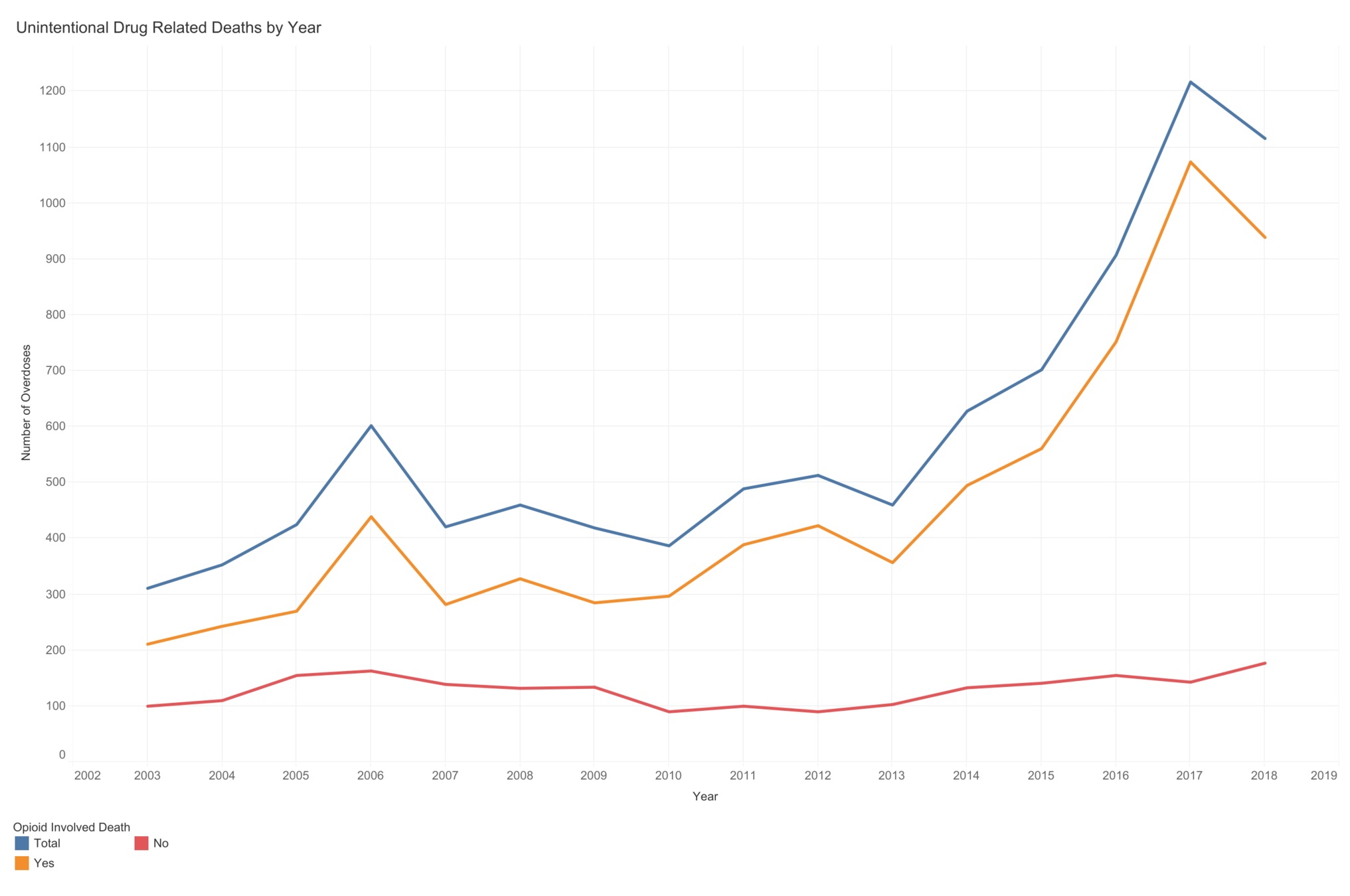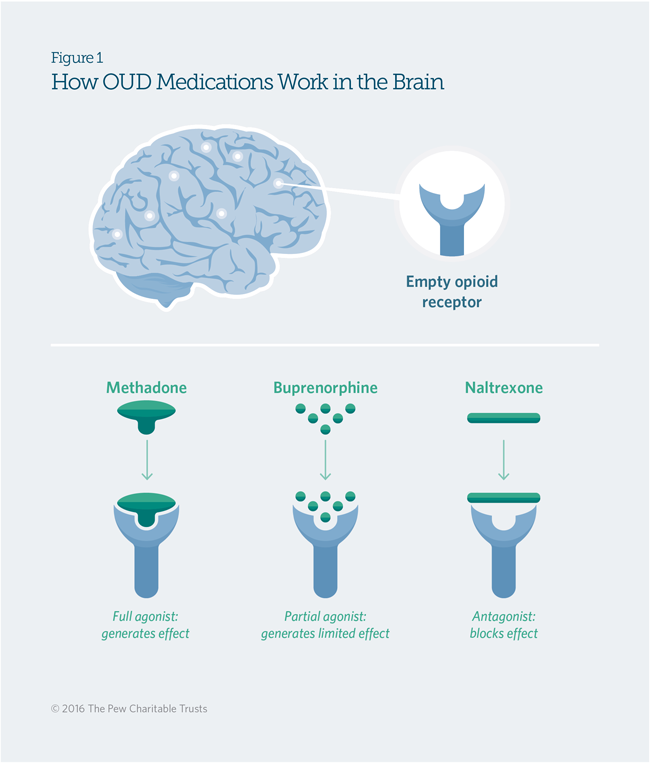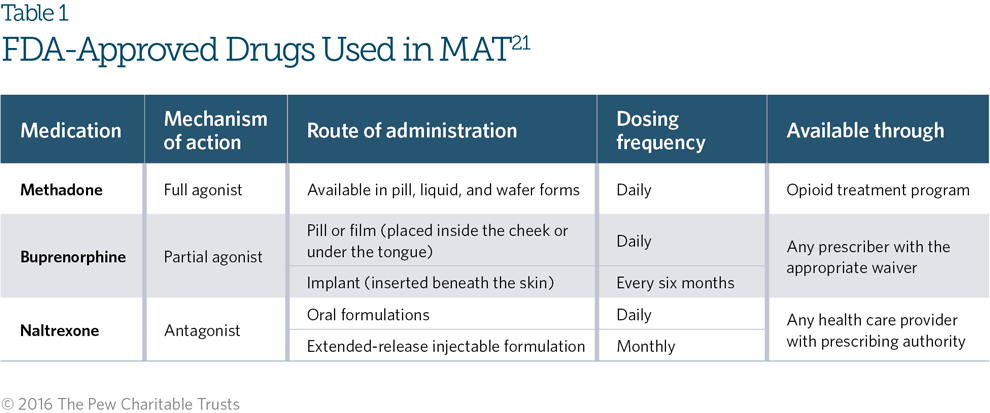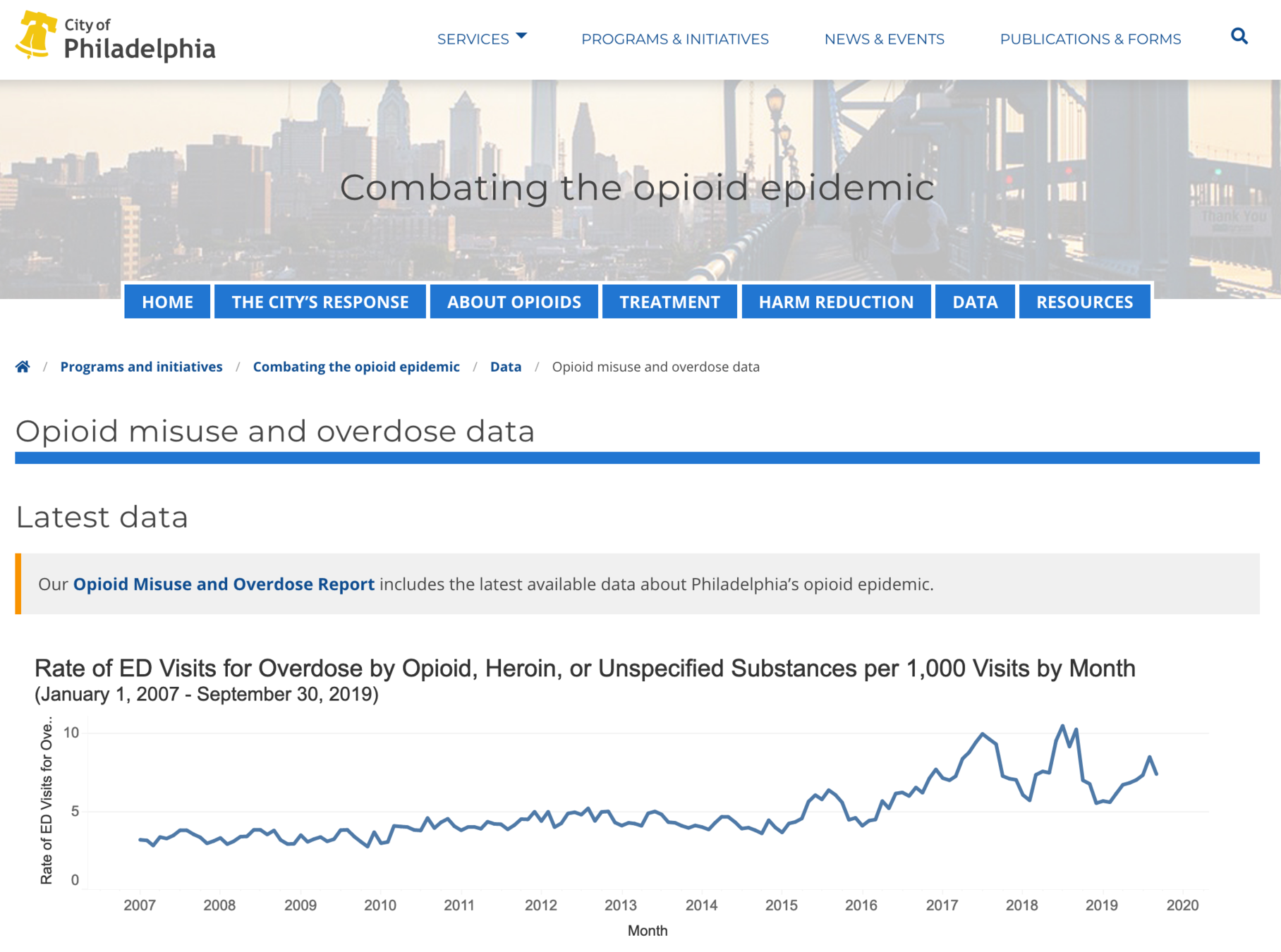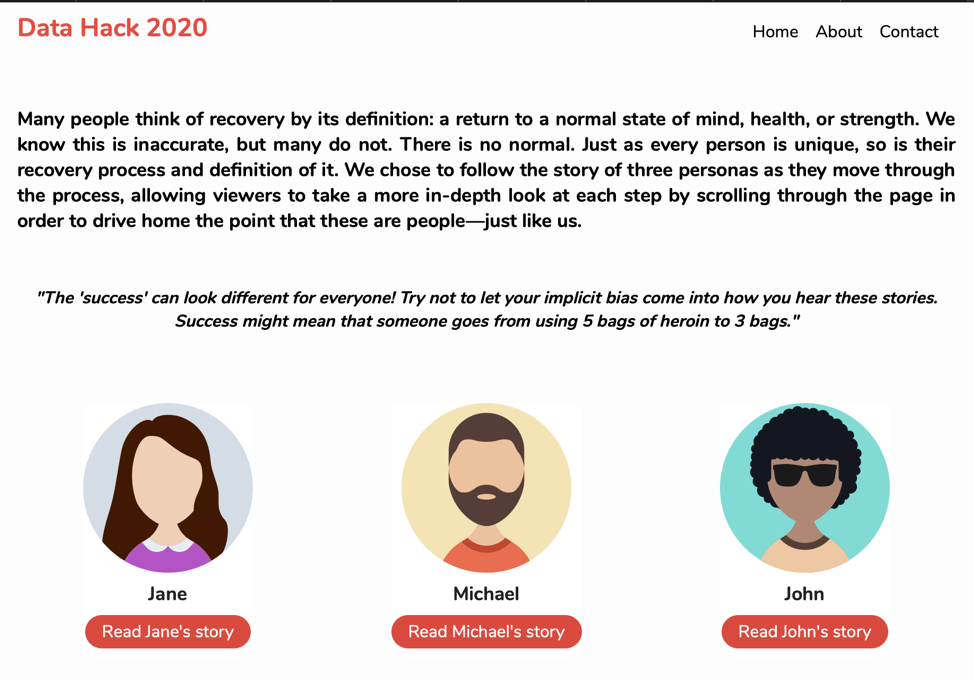Visualizing the Inside Journey of Recovery from Opioid Use Disorder
2020 Data Hackathon
Presented by Silvia P. Canelón, PhD
Team 11
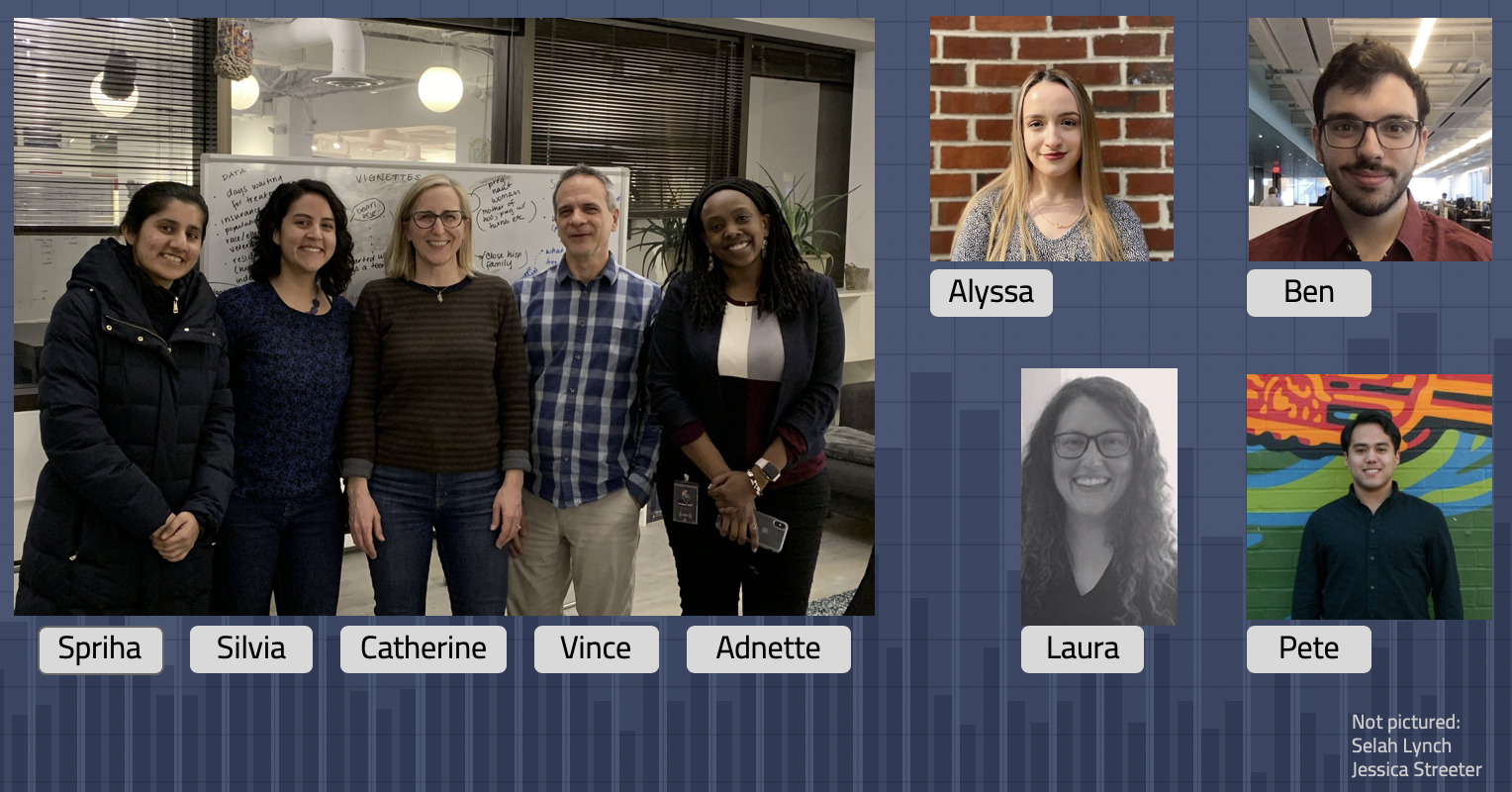
What's a data hackathon?
Event coordinated to organize
data-curious volunteers to provide the community with insights that may
normally be unavailable





Hosts.
- Topic. The opioid epidemic
-
Partners.
Health Federation of Philadelphia & Prevention Point Philadelphia
Volunteers
- Learn new tools/skills
- Explore new analyses
- Make new
data science friends - Work on projects that have a real impact
Partners
- Useful Insights
- Knowledge sharing
- Understandable
- Transferable output
Outcomes
Structure
- ~6 weeks long
- 1 kickoff night with partner presentations
- 1 hack day to create teams
- 6 hack nights to work on the project
- 1 final presentation for the partners
- 1 final report for the partners
Supports a network of health centers
as well as private/public-sector organizations that delivery health and human services to vulnerable populations
Non-profit, public health organization committed to protecting the health and welfare of drug users and sex workers using harm reduction theory to reduce the harm associated with drug use and sex industry work
Kickoff w/ partner presentations




Common prescription opioids:
- Oxycodone (Oxycontin, Percocet)
- Hydrocodone (Vicodin)
- Morphine
- Codeine
88% of drug-related deaths involved opioids in 2017
Each of these points represents
a unique human being
Hack day
- Can we visualize the recovery process with regards to building both understanding in the general public and also better tools for warm handoffs?
- What have been the effects of granting citizens access to Narcan?
- How many IV drug users are in Philadelphia?
Team formation
Can we visualize the recovery process with regards to
building both understanding in the general public and
also better tools for warm handoffs?
= storytelling project
1: Build basic understanding
- Opioid Use Disorder
- What is withdrawal like? How long does it last?
- Recovery
- What is the referral process?
- Who are the treatment providers?
- How and when can a person begin treatment?
Motivation
- First recovery story: Ramon Cruz
- Highlight the process and the barriers
- Focus on the individual
- Help explain what recovery looks like and build empathy
Treatment options for OUD
- Methadone
- Buprenorphine
- Naltrexone
- (Naloxone, i.e. Narcan)
- opioid overdose reversal
-
Drug cravings
-
Moodiness: depression, anxiety, fear of withdrawal
-
Stomach cramps
-
Diarrhea
-
Fever and chills
-
Muscle spasms, join pain, tremor
-
Nausea and vomiting
-
Restlessness, yawning insomnia
-
Upper body secretions: watery eyes, runny nose, sweating
-
Cardiovascular problems: elevated heart rate and blood pressure
onset within 3-5 hours after last opioid use
What is withdrawal like?
Imagine the worst flu of your life...then multiply it by 10
The fear of experiencing those symptoms again is what keeps me in recovery
2: Collecting qualitative data
Center for Opioid Recovery and Engagement (CORE)
Health Federation interview
- Catherine Abrams, Opioid Response Program Coordinator
- Anya Slizik, intern

The referral process

Penn Medicine interview
- Freakonomics Podcast: The Opioid Tragedy
Center for Opioid Recovery and Engagement (CORE)

- Certified Recovery Specialists
- Nicole O'Donnell
- Bryant Rivera
- Emergency medicine physician
- Dr. Utsha Khatri
- Person in recovery: Devin Kloss
The referral process

Prevention Point interviews
- Megan, drop-in case manager
- Marilyn, drop-in case manager
- Dolores, re-entry case manager
- Stefanie, medical clinic case manager
- Andrew, mobile clinic case manager

The referral process

Recurring themes & barriers
in recovery stories
- “Mindset for recovery”
- Every recovery path is unique
- Recovery can include relapse
- Trust in relationships with partners in care
- Lack of access to medication assisted treatment
- Homelessness and mental health challenges
- Stigma
3: Collecting quantitative data
- Opioid Misuse and Overdose Report February 2020 (Department of Public Health, Philadelphia)
- SAMHSA TEDS-A databases 2015-2017
- National Institute on Drug Abuse (NIDA)
- Data from the Open Data Pennsylvania website
- Philadelphia Department of Public Health
- Trends
- Treatment Episode Datasets
- facilities that receive public funding
- Admissions
- Discharges
- Up to 2017

- Resources and stats regarding individuals with co-ocurring substance and mental health disorders


- Emergency Medical Services (EMS) Naloxone Dose Administered by Calendar Year


Storytelling as tool for empathy
- Website is a “scrolly”
- Graphics remain in place and change as
reader scrolls through story
- Graphics remain in place and change as
- HTML can be imported as iframe and
embedded in partner’s websites - Inspired by Nathaniel Lash's scrollytale of how Oxycontin sales dominated Philly's pharmacies (Philly Inquirer)

Next steps
- Incorporate this web app into the partners’ web pages
- Amend personas or create additional personas
- Add supporting data from other Data Hack teams
Final deliverables
- Contextualizing Prevention Point’s Narcan Distribution Program - for Grantmakers
- Estimating the Number of Injecting Drug Users in Philadelphia
- Saving Lives: Naloxone Administration
- Economic Impact of the Opioid Crisis
- MATchmaker: Mapping Buprenorphine Providers Relative to Opioid Use Disorder Overdoses
- Overdose fatalities overlaid with
- Availability of MAT and buprenorphine providers

Similar
opportunity

Research ideas for discussion
- LDI Rapid Response ($7500)
- Demonstrate likelihood of increased coronavirus exposure/COVID-19
- Individuals on Medication Assisted Treatment (MAT)
- Individuals experiencing homelessness
- Demonstrate likelihood of increased coronavirus exposure/COVID-19
- General
- Pregnancy outcomes for patients with opioid use disorder Dx and/or MAT medications (i.e. Subutex)
2020DataHack
By spcanelon
2020DataHack
Presentation for 2020-03-27 lab meeting
- 1,548
